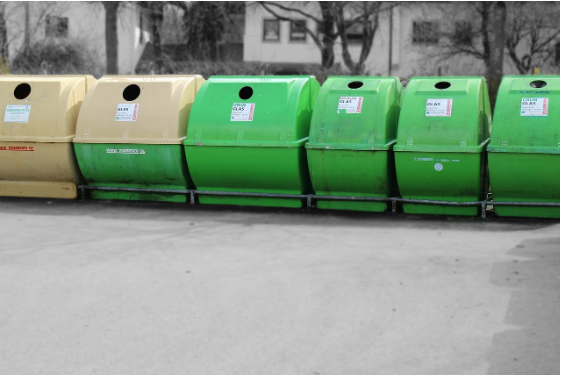6 Changes You Can Make to Increase Your Home's Sustainability

Adopting sustainable practices at home is more important than ever. By making a few smart changes, you can significantly reduce your carbon footprint, save on utility bills, and create a healthier living environment. Whether you’re a seasoned eco-warrior or just starting your journey toward sustainability, these six tips will help you make impactful changes that benefit both your home and the planet.
Solar Roofin
Solar roofing is one of the most effective ways to increase your home’s sustainability. By installing solar panels on your roof, you can harness the power of the sun to generate electricity for your home. This not only reduces your reliance on fossil fuels but can also significantly lower your energy bills. Solar energy is clean, renewable, and abundant, making it a smart investment for the future. Finding local options, whether that’s sustainable solar roofing in Dayton, OH, or Miami, FL is also a great way to support your community. This is a win-win situation for both you and the environment. Just be sure to conduct due diligence and select a reliable business for the project.
Implement a Comprehensive Recycling System
Implementing a comprehensive recycling system in your home is another significant step toward sustainability. Start by setting up distinct bins for various categories such as paper, plastics, glass, and metals. Ensure that everyone in your household is aware of what materials can be recycled and how to properly clean and sort them. It’s also beneficial to stay informed about local recycling guidelines, as they can vary.
Many communities offer curbside recycling programs, but if those services are not available to you, consider establishing a schedule to take recyclables to the nearest drop-off center. Educate yourself on less commonly recycled items like electronic waste or batteries and find appropriate disposal methods. By committing to recycling, you reduce waste, conserve natural resources, and foster an eco-friendly attitude within your home.
Energy-Efficient Appliances
Switching to energy-efficient appliances is a straightforward yet impactful way to boost your home’s sustainability. Modern energy-efficient appliances, from refrigerators and washing machines to ovens and air conditioners, are designed to use less electricity and water, helping you save on utility bills and reduce your environmental footprint.
Look for appliances with the ENERGY STAR label, which indicates that they meet strict efficiency guidelines set by the U.S. Environmental Protection Agency. Additionally, consider replacing old appliances, as newer models are typically far more efficient. Even small changes, like opting for LED light bulbs and energy-efficient power strips, can add up to significant savings over time. Making the shift to energy-efficient appliances not only benefits the planet but also enhances the long-term value and comfort of your home.
Use Sustainable Building Materials
Utilizing sustainable building materials in your home construction or renovation projects is an excellent way to enhance its sustainability. Materials such as reclaimed wood, bamboo, and recycled steel are not only eco-friendly but also remarkably durable. Reclaimed wood, for example, provides a rustic charm while reducing the demand for virgin timber, thereby conserving forests. Bamboo grows rapidly and is considered one of the most renewable building materials available. Recycled steel, sourced from old buildings and cars, offers high strength and longevity without the environmental impact of mining new steel. When selecting materials, look for those certified by reputable organizations like LEED (Leadership in Energy and Environmental Design) or FSC (Forest Stewardship Council), which ensure they meet stringent environmental and social standards.
Adopt Water-Saving Measures
Adopting water-saving measures is essential for maximizing your home’s sustainability. Start by installing low-flow fixtures, such as showerheads, faucets, and toilets, which significantly reduce water usage without compromising performance. Consider upgrading to a high-efficiency washing machine and dishwasher, both of which consume less water and energy.
In addition to these upgrades, implement simple daily habits like turning off the tap while brushing your teeth, fixing leaks promptly, and taking shorter showers. Collecting rainwater for outdoor use, such as watering your garden or lawn, is another effective way to conserve water. You can also opt for drought-resistant plants and landscaping techniques such as xeriscaping, which reduces the need for irrigation.
Embrace Green Landscaping Techniques
Embracing green landscaping techniques can significantly boost your home’s sustainability while creating a beautiful and vibrant outdoor space. Start by incorporating native plants, which are well-adapted to your local climate and soil, requiring less water, fertilizer, and maintenance. Additionally, native plants support biodiversity by giving local creatures vital habitats. Another effective strategy is to use organic mulch, which helps retain soil moisture, reduce weeds, and enrich the soil as it decomposes.
Consider practicing xeriscaping, a landscaping method that focuses on water conservation by using drought-tolerant plants and efficient irrigation systems. Installing a rain garden can also capture and filter rainwater runoff, reducing erosion and recharging groundwater supplies. Additionally, using permeable paving materials for walkways and driveways can aid in managing stormwater.
By implementing these six changes in your home, you can significantly increase its sustainability and contribute to a healthier planet for all. Each one of these tips is easy to implement and offers long-term benefits for both your household and the environment. So why wait? Start making a positive impact today! Keep learning about sustainable practices, stay informed on current environmental issues, and encourage others to join in creating a more sustainable future for our homes and communities.






